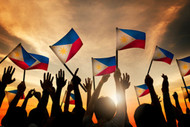6 Interesting Facts About Independence Day of The Philippines You Probably Didn't Know
Posted by Anna on 15th May 2023
In preparation for the 125th anniversary of the Philippines' independence, we're taking a moment to reflect on the past and pay tribute to our heroes. Do you know about Philippine Independence Day history? Who formally proclaimed us independent? Refresh your knowledge of the Independence Day facts before the holiday.
A Snippet of the Philippines' Independence Day History

Philippines Independence Day
This is a brief of Philippine Independence Day history.
Spanish colonists took over the Philippines in the second part of the 16th century. Intellectuals in the Philippines were forced to defend their rights and strive for liberation from the oppression that followed under Spanish rule. The Katipunan revolutionary movement, with Emilio Aguinaldo as its leader, resulted from this awakening.
But the path to independence was a lengthy one. The persistent crushing of a Cuban uprising by Spain in April 1898 was the impetus for the start of the Spanish-American War.
The first of many American victories came on May 1, 1898, when the United States beat Spain in the Battle of Manila Bay. When the Spaniards banished Aguinaldo from Hong Kong, the Americans devised arrangements for him to return to the Philippines and join the fight against Spain.
Aguinaldo quickly proclaimed Philippine independence on June 12, 1898, after his return, and he established a provincial administration, of which he also rose to become the head. But in 1902, the United States consolidated its power and established its own government there. After a few decades, President Manuel Quezon formed the Commonwealth of the Philippines.
The Philippines attained full independence in 1946 following the events of World War 2 and the U.S.'s pledge to do so.
If you are interested in Philippines Independence Day Collection, please visit our online store HERE. In particular, we have a 15% discount code exclusively for the readers reading this article! Please insert code: POLYBLOG15 for your cart.
Facts About Independence Day of The Philippines
Spain and the United States engage in a mock combat

Philippines American War
Long after Aguinaldo proclaimed Philippine independence, there were still numerous battles raging between America, Spain, and the Philippines.
The Spanish commander finally gave over control of Manila to the Americans in August 1898, but only after they agreed to perform a "mock battle of Manila" and bar Filipino revolutionaries from the city.
However, the Philippines were annexed by the United States, and Spain was granted $20 million in compensation as part of the Treaty of Paris. Aguinaldo first rebelled but subsequently swore allegiance to the United States. However, many of his supporters persisted in the conflict. The emergence of the American civil administration in 1902 put an end to the three-year-long Philippine rebellion.
There have been multiple declarations on the Philippines' Independence Day.
The first of several dates for Independence Day in the Philippines is June 12. In 1935, Filipinos established the Commonwealth of the Philippines with U.S. approval, with Manuel Quezon elected as its first leader. On July 4, 1946, after the end of World War II, America granted the Republic of the Philippines full independence.
But why is June 12 celebrated in the Philippines as Independence Day? President Diosdado Macapagal remarked that "the recognition of the independence of a nation should not be accorded by any other country but itself." His declaration that this day was the nation's day of freedom in 1962 and the subsequent passage of Republic Act 4166 in 1964 were both based on this conviction.
If you are interested in Philippines Collection, please visit our online store HERE. In particular, we have a 15% discount code exclusively for the readers reading this article! Please insert code: POLYBLOG15 for your cart. Happy shopping!
When there is a war, the color of the flag's top changes.

The Philippine Flag
Because the colors of the Philippine flag are used to represent the nation's current state, it is unusual. In times of peace, the flag is flown with a blue stripe on top. In contrast, during times of conflict, businesses, and organizations will fly the flag with a red star on top.
Made in Kongkong
The Philippine flag was designed by Aguinaldo himself, and he personally gave it to Marcela Agoncillo, who was then residing in Hong Kong. For five days, Agoncillo and her two helpers worked on the flag.
The three stars on the flag originally stand for the islands.

The Philippine Flag
As opposed to what many people have learned in school, the three stars originally stood for Luzon, Panay, and Mindanao, not Luzon, Visayas, and Mindanao. One of the three most significant islands in the nation and the birthplace of the revolutionary movement was Panay.
Actually, the Lupang Hinirang was the country's second national anthem.

Lupang Hinirang
The second anthem of the Philippines was Lupang Hinirang, which is now known as the country's national anthem. The first, Marangal na Dalit ng Katagalugan, was created in answer to Andres Bonifacio's request by musician Julio Nakpil.
It took place when Philippine Independence Day was proclaimed. Unfortunately, the Marangal na Dalit ng Katagalugan's original structure was destroyed during the Battle of Manila.
Check out our Philippines Independence Day Collection at HERE. In particular, we have a 15% discount code exclusively for the readers reading this article! Please insert code: POLYBLOG15 for your cart. Happy shopping!




